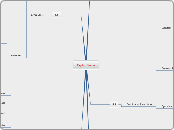jonka Aidan Ward 7 vuotta sitten
439
Sample Mind Map
The computer case is designed to house all internal components and wiring, ensuring they remain secure and are adequately ventilated to prevent overheating. The optical drive's primary role is reading and writing data on optical discs, with different types available such as CD-ROM, DVD-ROM, and Blu-ray.









